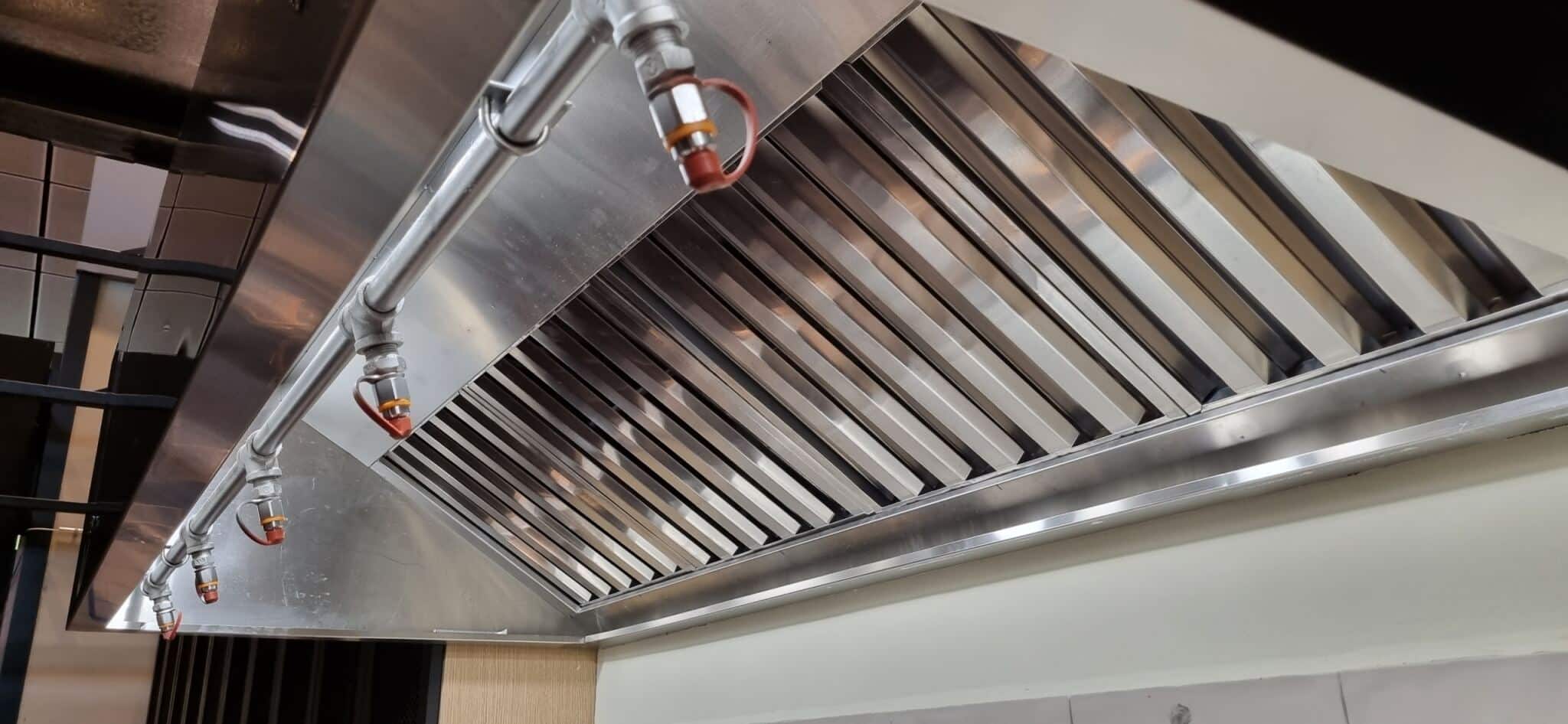Grease filters are critical in the effective operation of commercial kitchen exhaust systems. Sitting quietly above the bustle of the kitchen, they play a vital role in protecting your team, premises, and business from the risks of grease build-up and fire. But not all grease filters are created equal. The right choice and maintenance can make all the difference between a safe, efficient kitchen and one at risk of costly downtime or compliance failures.
This article explores the main types of grease filters, how they work, their strengths and weaknesses, and the practical steps to ensure they perform optimally in your kitchens.
The Role of Grease Filters
Cooking releases grease into the air in forms ranging from large spatter droplets to fine mist and grease vapour. These particles are drawn into the kitchen’s exhaust system, where grease filters are the first line of defence.
Common types, like baffle and honeycomb filters, force air to change direction repeatedly. Heavier grease particles lose momentum and collide with and adhere to the filter surfaces, while cleaner air passes through. This mechanism reduces grease accumulation in ducts and exhaust fans, reducing fire risks and improving overall exhaust efficiency.
Types of Grease Filters
Baffle Filters
Baffle filters are one of the most common and widely used grease filter types in commercial kitchens. They work by forcing air to change direction repeatedly as it passes through a series of overlapping blades. This motion causes grease particles to lose momentum and stick to the filter surface.
Baffle filters typically capture 80-90% of airborne grease particles. They are durable and easy to clean and while effective for heavy grease-producing kitchens, they are less effective at capturing ultra-fine particles and grease vapor.
Honeycomb Filters
Honeycomb filters are designed with a mesh or lattice structure that provides a larger surface area for trapping grease particles. Honeycomb filters can capture up to 95% of airborne grease particles and are ideal for kitchens with significant grease and mist production.
While honeycomb filters have a highergrease-capturing efficiency than baffle filters, this means that they clog faster than baffle filters and require more frequent cleaning.
How Much Grease Can a Filter Trap?
The amount of grease a filter can trap depends on its type and the intensity of kitchen operations. In a high-use kitchen, a honeycomb filter might trap between 2 to 3 kilograms of grease per week per filter, while a baffle filter could capture 1.5 to 2 kilograms in the same period.
However, as filters capture grease, their performance diminishes, making regular cleaning essential to maintain efficiency.
How Clogged Filters Affect Efficiency
As grease accumulates, filters become clogged, reducing their effectiveness and impacting the overall performance of the exhaust system:
- Reduced Grease Capture: A clogged filter allows more grease to bypass into the ducts, increasing fire risks and the need for more frequent duct cleaning.
- Restricted Airflow: Blocked filters restrict airflow, forcing exhaust fans to work harder and reducing the system’s efficiency. This can lead to higher energy costs and reduced kitchen ventilation, creating an uncomfortable and potentially unsafe working environment.
- Increased Kitchen Cleaning: As airflow is restricted, exhaust efficiency decreases and more grease is released into the kitchen environment resulting in an increased cleaning load.
- Increased Fire Hazard: Grease trapped on clogged filters becomes a concentrated fuel source, significantly increasing fire risks.
Choosing the Right Filter
Selecting the right grease filter depends on your kitchen’s cooking intensity, equipment, and maintenance capabilities:
- For Heavy Grease Production: Kitchens with fryers and grills should opt for baffle filters, which are durable and handle large grease loads effectively.
- For Fine Mist and Vapor: Kitchens with wok cooking or charbroiling may benefit from honeycomb filters, which capture finer particles but require diligent cleaning.
When to Clean Your Filters
Knowing when to clean grease filters is crucial for maintaining safety and efficiency and cleaning frequency should consider cooking type, cooking volume and likely grease accumulation:
- Visual Inspection: If grease is visibly coating the filter, it’s time for cleaning.
- Weekly Cleaning for High-Use Kitchens: Filters in busy kitchens may need to be cleaned every 7–14 days to maintain performance.
- Monthly or Quarterly Cleaning: Kitchens with lower cooking volumes may stretch cleaning intervals but should never exceed best practice guidelines.
Best Practices for Maintenance
To keep grease filters performing at their best, establish a cleaning schedule and align cleaning frequency with your kitchen’s workload and the type of cooking conducted. If you decide to engage a professional cleaning service, find out how they clean filters. Power washing with water is insufficient and only soaking and agitating filters in hot water with a degreaser effectively removes grease buildup.
The Bottom Line
Grease filters may seem like small components in the larger exhaust system, but their role in fire prevention and kitchen efficiency cannot be overstated. By choosing the right filter, cleaning it regularly, and understanding its limitations, you can protect your business, comply with regulations, and create a safer working environment.
The next time you inspect your exhaust system, take a closer look at those grease filters. Are they clean? Are they the right type for your kitchen’s needs? A little attention now can save you from big problems later.
In our next article – Part 3, we look at the journey of airborne grease after it is created and where it goes.

